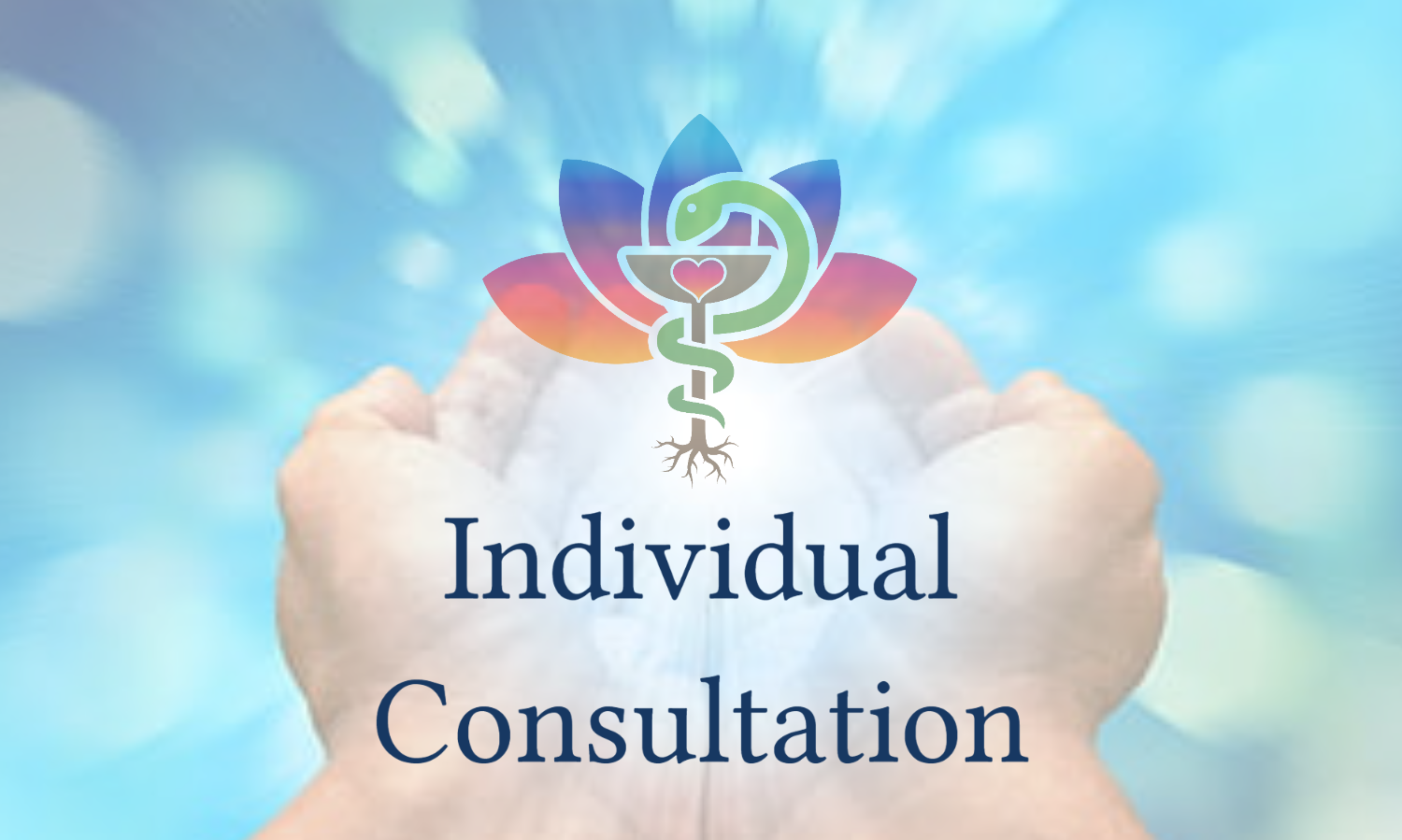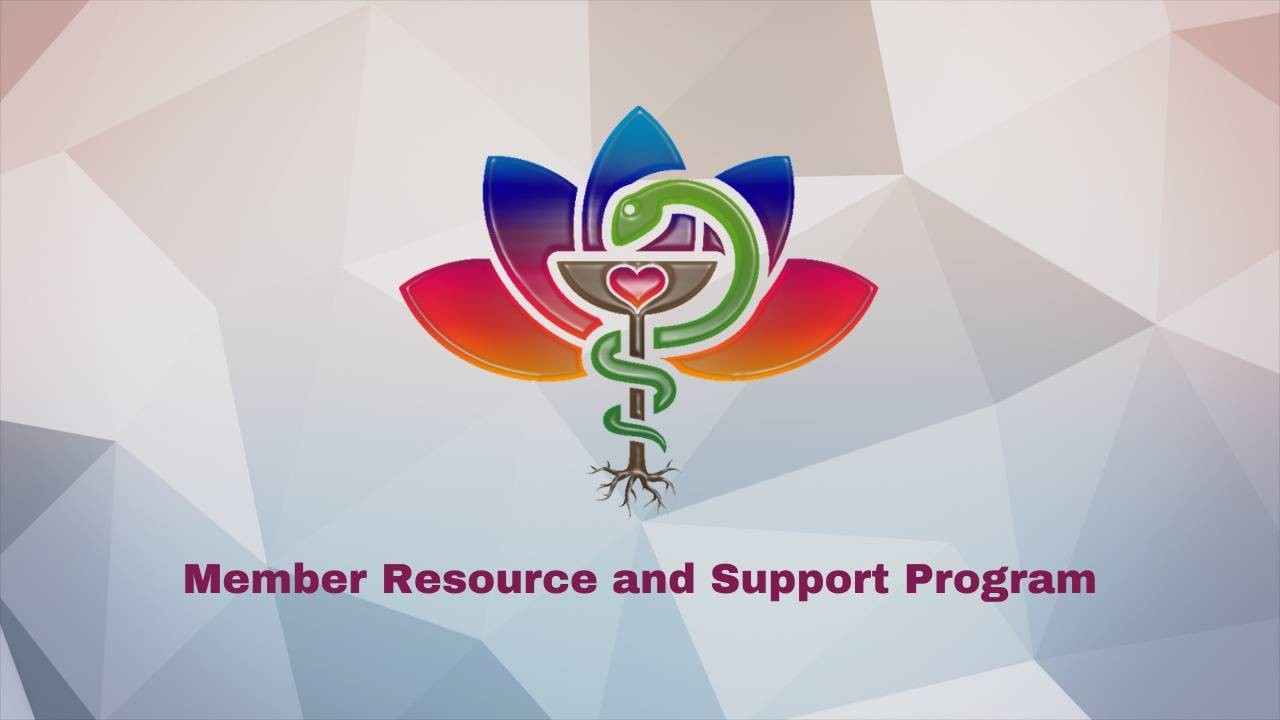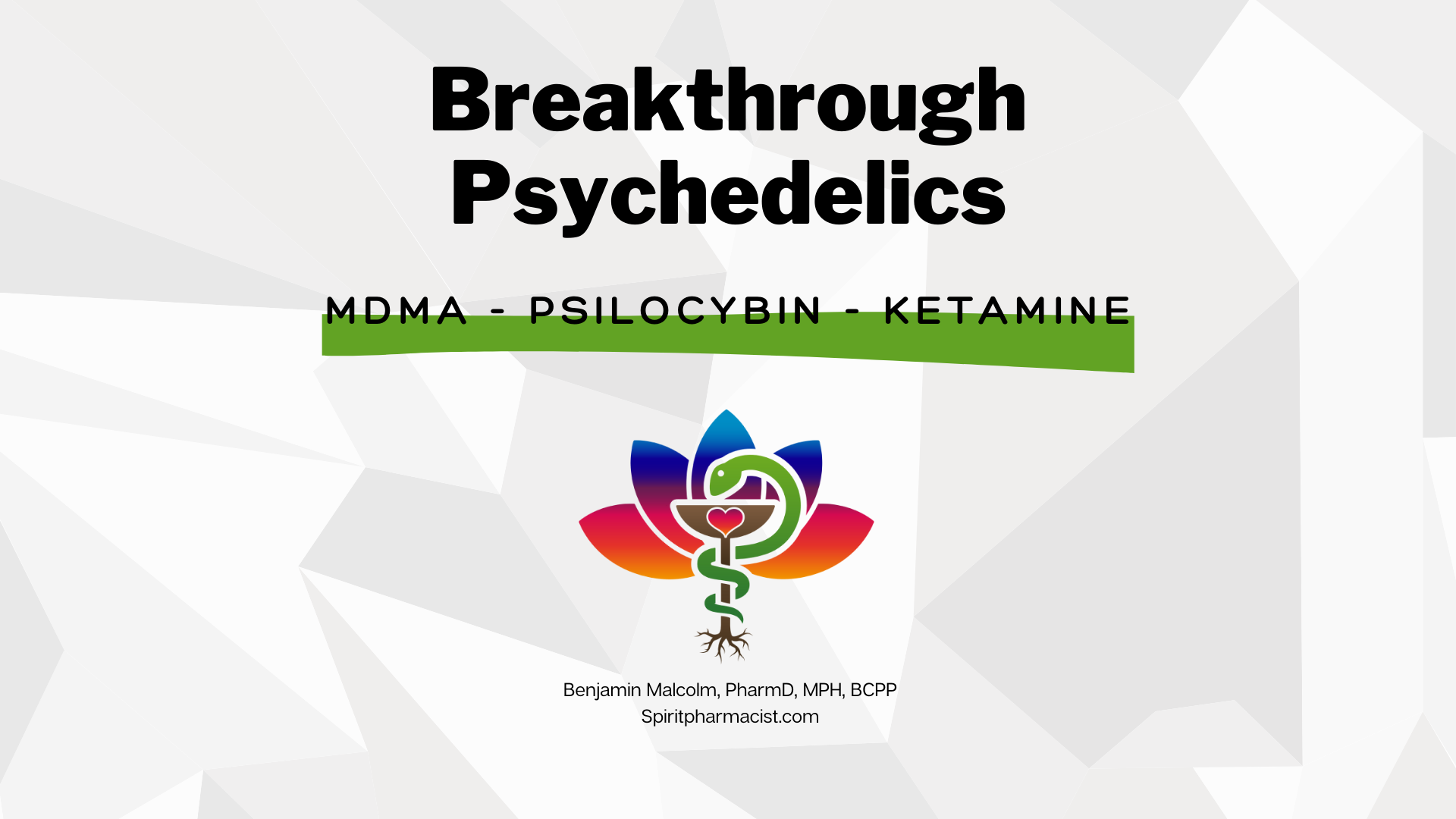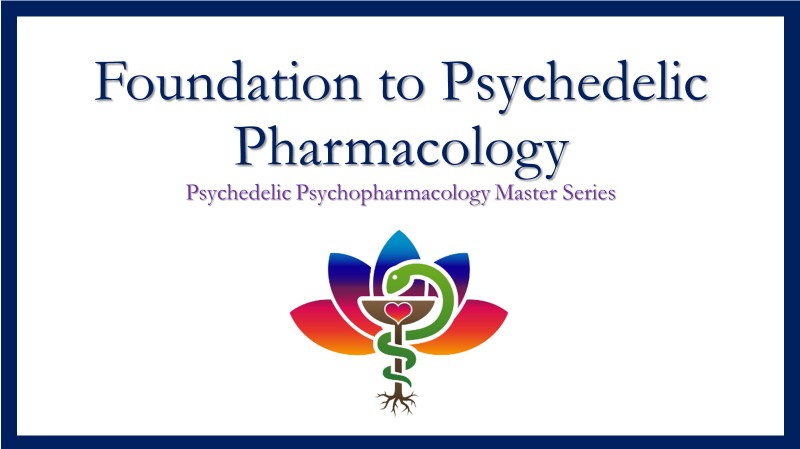On Psychotropics & Psychedelics: To Taper or Not to Taper?
Feb 28, 2020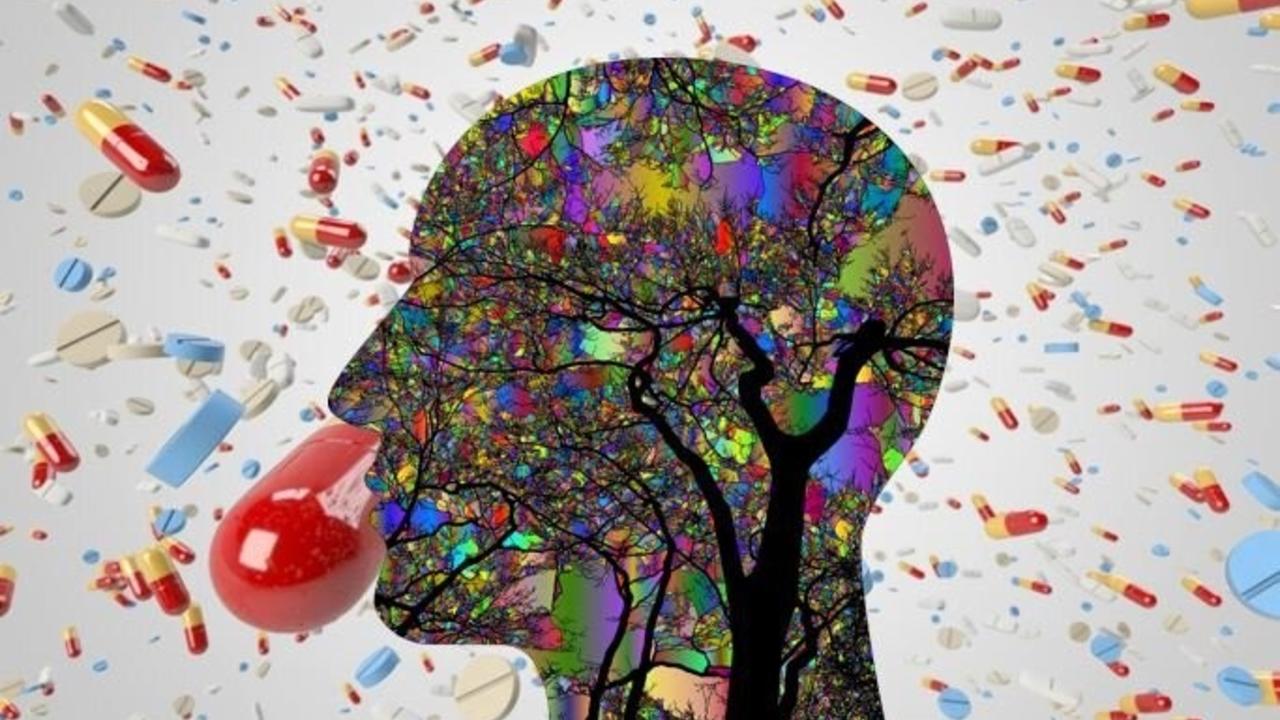
A Growing Issue
As psychedelics gain popularity for healing of mental illness, larger numbers of persons taking medications to treat mental health conditions (psychotropics) are gravitated towards their use. A common conundrum in psychedelic healing practices is the optimal management strategy when the participant is taking psychotropic medication. In this article we’ll walk through some of the benefits and risks of tapering psychotropic medications in preparation for psychedelic use as well as outline an approach that the end user can take in order to make informed decisions with their treating provider(s).
Psychotropics & Psychedelics: Strange Bedfellows or Healing Allies?
Existing medications to treat mental health conditions (psychiatric pharmaceuticals or psychotropics) can be effective in reducing symptoms of illness, leading to improvements in how a person feels as well as their functionality. The benefits of psychotropics include an enhanced tolerance to stress, although this may be accomplished via a narrowing of their emotional range, leading to side effects such as feeling “numb, like a zombie”. Psychotropics typically do not ‘cure’ mental health conditions, can produce physical dependence and withdrawal syndromes when taken for extensive periods, may have bothersome side effects, and may not produce robust benefits in some.
The term psychedelic means ‘mind-manifesting’ or ‘soul-manifesting’ and psychedelics have been thought of as amplifiers of consciousness, meaning they increase the intensity of thoughts or feelings. Current research suggests that moderate to large doses of psychedelics (macrodoses) in combination with psychotherapy can help to surface emotional content, which can then be processed therapeutically. In studies, this has led to persistent improvement in symptoms and functioning that are sustained over periods of weeks –months and occasionally years, sometimes with as little as one psychedelic session [1-3]. Taking psychedelics in small ‘subperceptual’ doses has become popular and may work in a similar fashion yet more subtly over a longer period. For example, in a study that followed persons that microdosed for 6 weeks they found decreases in depression and stress, yet increased neuroticism, implying that although they felt better, they were also more sensitive to emotion [4].
Therefore, it appears that existing psychotropics and psychedelics may affect mental states in divergent ways: traditional psychotropics help a person tolerate a difficult situation or ‘weather the storm’ while psychedelics help a person with emotional processing or to ‘shake the snow globe’. These two mechanisms have been discussed as enhancement of ‘passive’ and ‘active’ coping mechanisms, respectively [5]. There may be possible benefits to combining them due to simultaneous activation of different sets of coping mechanisms. Conversely, these mechanisms may be counterproductive, either in intensity or quality of subjective experience or in their impact on mental healing processes.
I’ve written extensively about the existing data in other blogs related to antidepressants & related serotonergics, benzodiazepines, stimulants, analgesics, and antipsychotics. Join membership for access to my entire library of drug interaction guides.
In summary, there is some validity to the idea and small amounts of data suggesting that psychotropics may diminish or interfere with psychological aspects of psychedelic experiences, which could lead to counterproductive effects. However, there is a general lack of data confirming how much they interfere and whether this is worth the risks associated with taper, discontinuation, and washout of psychotropic medications.
Psychedelic – Psychotropic Interactions
There are many possible ways that various psychotropics may interact with psychedelics. For example, some interactions may involve competition or blockage in metabolic pathways leading to boosted concentrations of psychedelics or psychotropics (pharmacokinetic). Others may involve synergistic or counterproductive effects in neuronal tissues of the brain (pharmacodynamic). For the purposes of this article it may be useful to dichotomize drug interactions into those that present some risk of physical danger vs. those that are likely limited to psychological risks. This is a helpful distinction because physical dangers are much more tangible as far as having known and predictable negative outcomes, whereas psychological dangers are mostly theoretical at this point and may be risks the participant is willing to take.
Set, Setting, & Psychotropics
‘Set and Setting’ is an often discussed topic when designing optimal psychedelic experiences. The term ‘Setting’ refers to the physical environment and surroundings for the experience itself. The term ‘Set’ refers to mindset and encompasses the mental state of the user coming into their experience including things like expectations or intentions of use. It is generally thought that psychedelics are best experienced at times a person is feeling calm and relatively well overall, although this is not always the case in studies in of persons being treated for mental illness.
The presence or absence of psychotropics can directly affect the ‘Set’ of the psychedelic user. For example, use of a benzodiazepine in close proximity to a psychedelic experience may diminish the intensity of the psychedelic experience and interfere with therapeutic processing of emotional content. On the flip side, discontinuing use of a benzodiazepine you were physically dependent on may lead to worsening insomnia or anxiety. If insomnia or anxiety is so severe the user cannot rest well for several days in a row, then the ‘Set’ of the user may become so poor that the psychedelic experience is negatively impacted.
Different persons have very different responses to stopping medications or changing doses. For some, tapering, discontinuing, and washing out is not a difficult process and does not lead to significant worsening of symptoms. Others may be very sensitive to withdrawal effects and dose changes or experience large increases in symptom severity or even suicidality when medications are tapered or discontinued. Therefore, in the absence of risks of physical toxicity, the decision to taper, discontinue, and washout mental health medications prior to psychedelic use is a risk vs. benefit decision that is unique to the individual and best made by the user in conjunction with their treating provider(s). This perspective and approach to interactions between psychedelics and psychotropics is generally aligned with principles of cognitive liberty, which supports the autonomy of an individual to determine their own mental state and consciousness as a fundamental right.
To Taper or Not to Taper: That is the Question
In the presence of known and significant physical risks, the decision to taper, discontinue, and washout psychotropic medications for an appropriate amount of time is not difficult. Psychedelics with a high propensity for physical risks in combination with psychotropics primarily include ayahuasca and ibogaine, although other combinations with phenethylamines or ketamine can also have significant physical risks. Classic tryptamine psychedelics (LSD, psilocybin, DMT) typically are the lowest risk in combination with psychotropics.
In the absence of significant physical risks, the decision to taper, discontinue, and washout psychotropic medications is rather grey and may be made based upon gauging possible risks and benefits of each strategy. The primary benefit of continuing to use a psychotropic medication when approaching psychedelics is avoidance of taper, discontinuation, and wash-out. This process is inherently very challenging for some because they are still experiencing symptoms of illness even on their medications and tapering and discontinuing medication can lead to withdrawal and further exacerbation of underlying symptoms. Especially when the user is sensitive to effects of withdrawal or experience extreme symptoms (e.g. suicidality) when tapering or without medication, it could be of benefit or safer to continue mental health medications. On the flip side, some data reports muting, blunting, or diminished acute psychedelic effects when psychedelics are combined with psychotropics. Others report heightened sensitivity to medications or side effects after use of psychedelics, although neither of these effects are well characterized or proven.
Therefore, while it may be ideal for acute subjective effects to taper, discontinue, and wash-out psychotropic medications prior to psychedelic use, this must be weighed against the potential risks associated with withdrawal of medication or symptoms of untreated mental illness returning. Similarly, it may be ideal to allow the post-use effects of psychedelics to continue unfolding without re-introducing medication, although must be balanced against severity of symptoms experienced post-use.
Taper vs. Hold
Many medications for mental health should typically not be stopped abruptly unless emergency circumstances warrant it. Using a psychedelic is not an emergency circumstance. However, there may be certain medications that a person is reliant on that are not currently options or good options to proceed with a taper and washout. For example, sleep aids or benzodiazepines are often prescribed in conjunction with antidepressants to help with sleep or anxiety. If an individual is already tapering an antidepressant, it may be unrealistic or intolerable to attempt tapering more than one medication simultaneously. It’s also a general rule of thumb in psychiatry for daily benzodiazepine users to not attempt taper unless things are going really well. This is because persons taking higher doses of benzodiazepines daily can become suicidal or have a seizure if you taper too fast or stop too suddenly, amongst myriad other intense and unpleasant withdrawal effects. Hence it may be conceivable for some users or situations that continuation of a psychotropic with a strategy of holding one to a few doses (or maybe simply reducing the dose for a few doses) around the time of the session to minimize blood concentrations may be more reasonable than taper, discontinuation, and washout. Medications in which this strategy may be particularly reasonable include GABAergics such as benzodiazepines, Z-hypnotics (zolpidem, eszopiclone, zaleplon), gabapentin, and pregabalin. Trazodone is another commonly used sleep aid that is optimal to wash out, yet may not be feasible to for some due to reliance on it for adequate sleep.
How Should I Decide What to Do?
The decision to taper, discontinue, and wash out psychotropic medications is personal. There are many potential factors to consider when making the decision and an inventory or self-reflection upon these factors in conjunction with your treating provider(s) can aid in making the best decision for you. Some questions you may want to consider:
-
What are the benefits and side effects of my existing medication(s)?
-
What are my goals regarding use of medication(s)?
-
What is the compatibility between my current medication(s) and planned psychedelic?
-
Do I have experience tapering and washing out my medication(s)?
-
Am I sensitive to withdrawal or experience extreme symptoms when not taking medication(s)?
-
Is my provider(s) supportive of a plan to taper me off? Will they help me with step-down doses or managing withdrawal?
-
What is my support network and is it strong enough to get me through a taper and washout?
-
Is it a good time in my life overall to attempt a taper and use psychedelics?
-
Am I ok with a potentially less intense subjective experience or is it an intention to have the most potent experience possible?
I Want to Taper, Discontinue, and Wash Out
Stopping abruptly or tapering too quickly puts the user at risk for severe withdrawal symptoms that could precipitate acute crisis situations such as suicidality. The rate of taper should be individualized as some are much more sensitive to withdrawal than others. The goal rate of taper should be so slow that user feels minimal withdrawal effects. If you’re finding that you ‘need something else’ to substitute or ‘get you through’ the taper process, you’re encouraged to slow down the rate of taper as it’s a sign you are experiencing significant withdrawal effects. If you’ve completed the taper process and been off your medication more than two weeks and noticing your mood, anxiety, or sleep is worsening, then it’s more likely a return of illness symptoms than withdrawal of medication.
In the circumstance you’re taking more than one medication that may interfere with the mechanism of psychedelics, it may not be reasonable to taper off of more than one medication at a time. This is because managing multiple withdrawal syndromes may be overwhelming and destabilizing or increase risk of rapid return of severe symptoms.
Given anticipated withdrawal syndromes or return of original symptoms of illness, it’s reasonable to anticipate that tapering medications may be a challenging period, perhaps even more challenging than the psychedelic journey and subsequent healing process. Attempting to view the emotional or physical difficulties that arise in medication taper processes as ‘practice’ for the possibly intense emotional effects of psychedelic experiences can be a useful psychological strategy. Arranging extra support for the process from your provider(s) and/or connecting with psychedelic support networks ahead of starting the taper process is another helpful strategy to ensure the taper is manageable.
Summary & Conclusions
In the absence of physical risks and/or clear data to guide management strategies of psychedelics and psychotropics, the decision to taper, discontinue, and wash out medications is best individualized. This approach supports the autonomy of the individual and respects individual differences in ability to taper medications in preparation for psychedelic use. Clarification of goals and intentions surrounding use of existing medications is a helpful practice in arriving at an informed and optimal decision for psychedelic users. Anticipating medication tapers may be challenging and arranging additional support for the process is a good strategy to increase success rates and improve safety.
References
1. Malcolm, B. J. and K. C. Lee (2017). "Ayahuasca: An ancient sacrament for treatment of contemporary psychiatric illness?" Ment Health Clin 7(1): 39-45.
2. Thomas, K., et al. (2017). "Psilocybin-Assisted Therapy: A Review of a Novel Treatment for Psychiatric Disorders." J Psychoactive Drugs: 1-10.
3. Mithoefer, M. C., et al. (2019). "MDMA-assisted psychotherapy for treatment of PTSD: study design and rationale for phase 3 trials based on pooled analysis of six phase 2 randomized controlled trials." Psychopharmacology (Berl).
4. Polito, V. and R. J. Stevenson (2019). "A systematic study of microdosing psychedelics." PLoS One 14(2): e0211023.
5. Carhart-Harris, R. L. and D. J. Nutt (2017). "Serotonin and brain function: a tale of two receptors." J Psychopharmacol 31(9): 1091-1120.
Join the Spirit Pharmacist Mailing List
Stay in touch to receive updates on new blogs, courses, special offers, and more. Don't worry, your information will not be shared.


